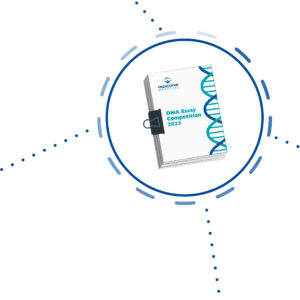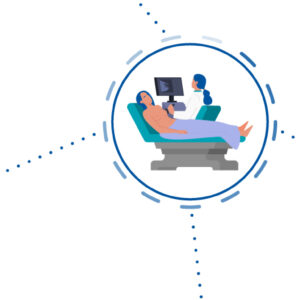Renal tubular dysgenesis (RTD) is a severe fetal disorder characterized by the absence or incomplete differentiation of the proximal tubules, early and persistent anuria and ossification disorders of the skull. Oligohydramnios, caused by the reduced production of fetal urine, can be observed from the 20th week of pregnancy, sometimes earlier, and persists throughout gestation. The absence of amniotic fluid leads to fetal compression and reduced intrauterine mobility, resulting in the so-called Potter sequence, which includes facial anomalies, excess skin, contractures and lung hypoplasia. The early appearance of fetal anuria is contrasted by the absence of major abnormalities of the kidneys or urinary tract on ultrasound examination. The kidneys are normal or slightly enlarged, with or without discrete hyperechogenicity or loss of corticomedullary differentiation.
The disease is always severe. Most patients die in utero or shortly after birth from respiratory distress, persistent anuria and refractory arterial hypotension. Individual patients have survived with intensive neonatal care requiring peritoneal dialysis and mechanical ventilation. The rare survivors showed chronic kidney disease or end-stage renal failure from birth.
RTD can be acquired during fetal development or inherited in an autosomal recessive manner. Secondary RTD due to other concomitant diseases has been described in the donor in fetal transfusion syndrome, in fetuses with congenital hemochromatosis, following maternal therapy with renin angiotension system (RAS) blockers during pregnancy, as well as in congenital heart disease or renal artery stenosis. The hereditary form is genetically heterogeneous and associated with pathogenic variants in genes coding for the main components of the renin-angiotensin system (RAS): AGT (angiotensinogen), REN (renin), ACE (angiotensin-converting enzyme) or AGTR1 (angiotensin II receptor type 1/AT1). In contrast to secondary forms, no reduction in intrauterine growth has been observed in connection with the genetic form of RTD. In all cases, renal hypoperfusion occurs.
The renin-angiotension system controls extracellular volume and maintains peripheral resistance, blood pressure, blood flow, and kidney function. It consists of angiotensinogen synthesized by the liver and cleaved in the circulation by renin, an aspartyl protease produced in the kidney. The resulting peptide angiotensin I is converted by the ectoenzyme ACE into angiotensin II (ANG II), the end product of activation of the RAS cascade. ANG II, an active octapeptide, binds to two different receptors—AT1 and AT2. AT1 mediates the vasopressive effect of ANG II, while AT2 has the opposite effect. ANG II exerts a negative feedback control on renin production. Thus, the absence or ineffectiveness of ANG II leads to an overproduction of renin.
Causative variants lead either to a lack of production (AGT, REN, ACE alterations) or to a lack of efficacy (AGTR1 alterations) of ANG II. ACE variants are causative in 65.5% of cases, REN variants in 20%, AGT variants in 8.5% and AGTR1 variants in 6%.
The diagnosis of autosomal recessive RTD is initially based on medical history, clinical and pathological examination and the exclusion of secondary forms of the disease. Abnormal renal renin expression may indicate the underlying genetic cause. Molecular genetic confirmation of autosomal recessive RTD is important to enable genetic counseling with an assessment of the risk of recurrence and, if necessary, prenatal diagnosis.
References
Gubler et al. 2014, Pediatr Nephrol 29:51 / Gribouval et al. 2012, Hum Mutat 33:316 / Kim et al. 2012, Clin Kidney J 5:56





















